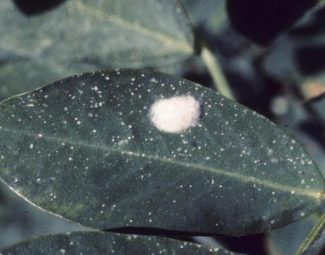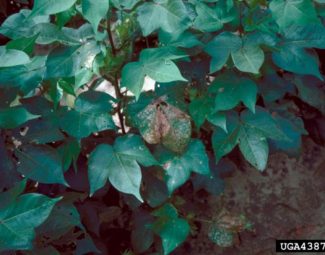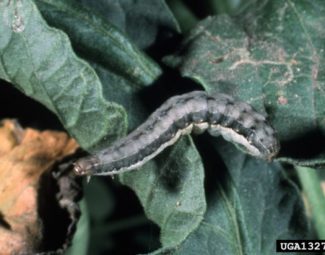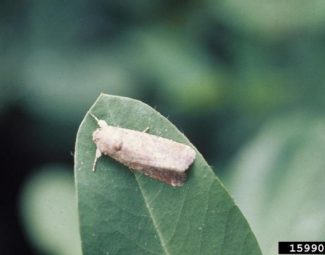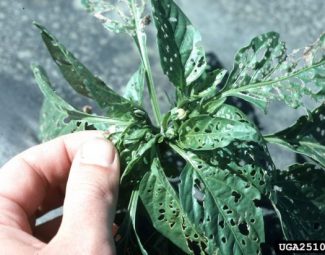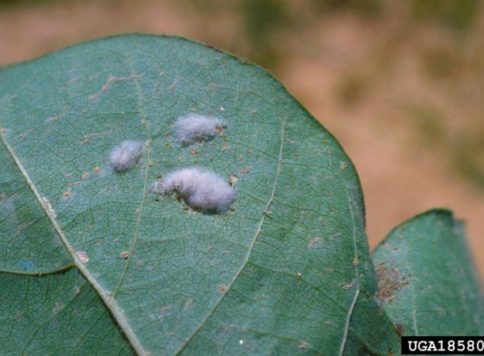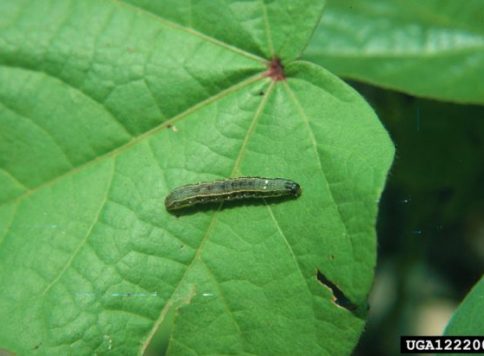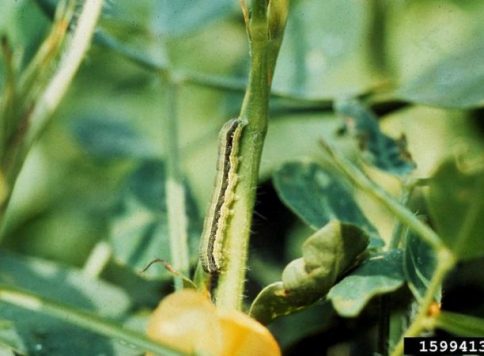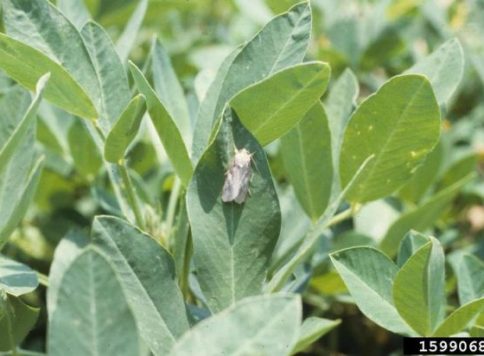Beet Armyworm
Insect Summary Report
Spodoptera exigua
General Information
- Beet Armyworm has wide range of host plants that include: alfalfa, asparagus, bean, beet, broccoli, cabbage, cauliflower, celery, chickpea, corn, cotton, cowpea, eggplant, lettuce, onion, pea, peanut, pepper, potato, radish, safflower, sorghum, soybean, spinach, sugarbeet, sweet potato, tobacco, tomato, and turnip.
- Weeds that serve as hosts include: lambsquarter, mullein, nettleleaf goosefoot, parthenium, pigweed, purslane, Russian thistle and tidestromia.
- In general, control measures are more effective on smaller larva than more advanced stages of development.
- They are strong fliers. Beet armyworm migrate northward across North America from over-wintering sites as summer progresses.
- Mass migratory infestations can occur when preferred hosts are no longer available due to lack of moisture and other environmental conditions.
- Damage foliage and fruit of host plants. Can cause severe defoliation when high population densities exist. Also capable of direct destruction and/or depletion of yield and yield quality. Feeding damage increases susceptibility of host plant to pathogens.
- Broad-spectrum insecticide use can reduce natural controls and increase Beet Armyworm survival rates.
- Sex pheromone is used for mating recognition.
Life Cycle (20-45 Days)
- Eggs… (2-3 Days) Laid in groups of 50-150. Usually found on the undersides of leaves, fruit and terminals. Taper to a peak when viewed from the side. White to green in color. White scales are deposited on top of cluster by the female moth that give the egg mass a cottony appearance.
- Larva… (11-25 Days) 5 instars. Variable coloration – light to dark green or pink with a white or dark stripe running the length of both sides of the body. Identifying characteristics include a smooth body with no hairs and large dark spots on both sides of the body just behind the head. Young larva feed in groups around the area of the egg hatch and may produce webbing as they feed. Mature larva feed singly.
- Pupa… (6-7 Days) 15-20 mm. Light brown. Pupal case consists of soil, sand or other ground debris loosely held together by oral secretions.
- Adult… (9-10 Days) 25-30 mm. Mottled brown or gray. Can deposit 300-600 eggs/female. Mating can occur shortly after emergence from pupa. Eggs begin to be deposited 2-3 days after fertilization and can continue for 3-7 days. Mainly nocturnal.
Over-wintering Strategy
Pupal stage is susceptible to cold temperatures. Over-wintering is usually only accomplished in the warm, southern climates of California, Arizona, Florida and Texas in the upper 6 cm of soil. If temperatures allow, can continue to generate populations year round.
Sampling
Traps baited with synthetic sex pheromone can be used to monitor adult populations. Traps should be checked 1-2 times per week and lure changed as recommended by the supplier. Inspect undersides of leaves and terminals for cottony egg masses. Randomly inspect plants for skeletonized leaves and other feeding damage. Sweep nets can also be used to detect larval infestations. Infestation along edges of fields may be more severe than more central locations.
Organic Control
- General Info
- Several native wasp parasites and syphrid flies serve as natural control in most areas. Various fungal and bacterial pathogens also serve as natural controls.
- Naturally occurring predators of eggs and larva include: minute pirate bugs, lacewings, big-eye bugs, and damsel bugs. These are also commercially available for augmentative release.
- Commonly Used Products
- Ferti-Neem Oil
- Ferti-Organics Karanja Oil
- Biorepel (Garlic Oil)
- Bt: Agree; Xentari; Dipel; Javelin
- Entrust (Botanical)
- Neemix 4.5 (Botanical)
Cultural Control
- Maintain good fertility and mineral balance in plants. Identify macro- and micronutrient deficiencies by performing plant tissue and soil analysis. Adjust for deficiencies with foliar and soil applied applications of appropriate fertilizers.
- Destroy vegetative materials and crop residue immediately after harvest.
- In forage and hay fields, cutting of vegetation can take the place of insecticide treatments. Leaving strips of uncut hay may reduce migration to adjoining fields and preserve natural controls.
- Early spring planting can encourage early harvest before populations build to economic thresholds.
More Images of the Beet Armyworm
Bibliography
- Image by John Capinera, University of Florida, Bugwood.org (beet armyworm larva)
- Images by John C. French Sr., Retired, Universities:Auburn, GA, Clemson and U of MO, Bugwood.org (eggs, early instar larvae, adults, larva on peanut plant, and adult on peanut plant
- Images by Alton N. Sparks, Jr., University of Georgia, Bugwood.org (late instar larva, egg mass hatching, and darker late instar larva
- Images by William Lambert, University of Georgia, Bugwood.org (larvae feeding on underside of leaf)
- Image by David Riley, University of Georgia, Bugwood.org (beet armyworm damage to sweet pepper plant)
- Image by Ronald Smith, Auburn University, Bugwood.org (egg mass)
- Image by Eddie McGriff, University of Georgia, Bugwood.org ( larva on legume)
- Image by Frank Peairs, Colorado State University, Bugwood.org ( larva)
- http://creatures.ifas.ufl.edu/veg/leaf/beet_armyworm.htm (Host plants, weed hosts, life cycle, color description, over-wintering, natural predators and parasites)
- http://www.ipm.ucdavis.edu/PMG/r1300711.html (Nocturnal behavior, conventional controls)
- http://www.ca.uky.edu/entomology/entfacts/ef308.asp (Larval webbing)
- http://msucares.com/pubs/infosheets/is1395.htm (Conventional controls, edge infestation)
- http://ipm.ncsu.edu/ag271/soybeans/beet_armyworm.html (Over-wintering pupa)
- Prabhaker N, Coudriet DL, Kishaba AN, Meyerdirk DE. 1986. Laboratory evaluation of neem-seed extract against larvae of the cabbage looper and beet armyworm (Lepidoptera: Noctuidae). Journal of Economic Entomology 79:39-41.
- Eveleens KG, van den Bosch R, Ehler LE. 1973. Secondary outbreak induction of beet armyworm by experimental insecticide applications in cotton in California. Environmental Entomology 2:497-50

